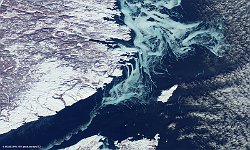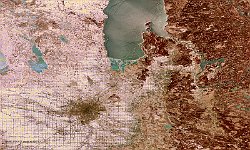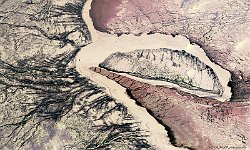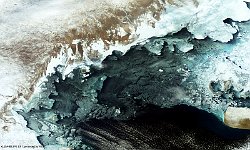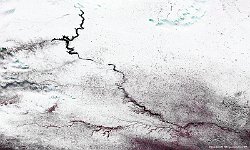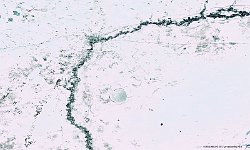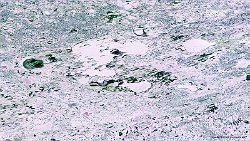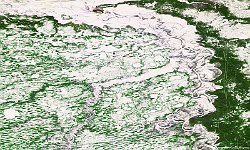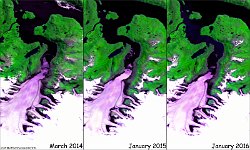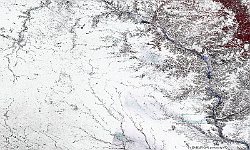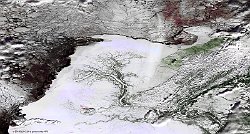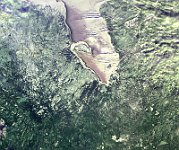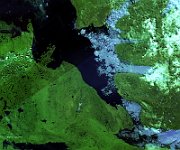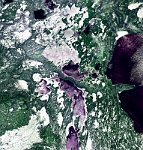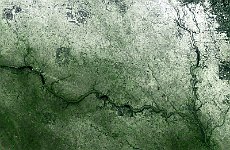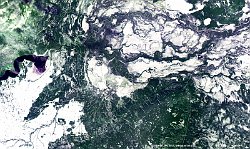7 / 21
Ural river, Russia
The 100 m false-colour image of 6 December 2016 shows us part of the Ural River, covered with a snow blanket. The river is flowing through Russia and Kazakhstan in Eurasia. It originates in the southern Ural Mountains and ends at the Caspian Sea. With 2,428 kilometres, it is the third-longest river in Europe after the Volga and the Danube. The river is mostly fed by melting snow (60–70%); the contribution of precipitation is relatively minor.
Date: 06/12/2016
Resolution: 100m
